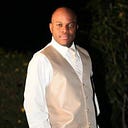LET’S GET ASTROPHYSICAL
As I prepare to participate in the Visionary Leadership Panel in Science, Entertainment and Technology for Digital Hollywood (hollywood.com), I find myself reflecting on the rationale for including performance arts, creative design, music and storytelling in traditional science education.
Let’s Get Astrophysical, the multimedia class experience I have created, combines theater, dance, performance, art, music, videography, physics, and astronomy in a unique new form of learning and expression — the creation of a Space Opera. It is for those who believe that science and art need not be separate- they can instead collaborate in a hands-on environment to create a transformative, high-energy musical performance while studying the sciences (STEM) —
My interest is in creating programs that don’t just address the needs of students who are already well on their way to becoming scientists, but to effectively engage a broader population of students who might not traditionally have considered a path in the sciences.
I believe we can use entertainment and contemporary media to capture students’ attention in an era of increasingly short attention spans. This provides a pathway for deep engagement, and ultimately to enlightenment. In my opinion, the combined effects of an increasingly sound-bite culture- texts, tweets, YouTube- have made it nearly impossible to sustain a meaningful public dialog on often-complex topics, including the sciences.
That is why I have shifted my focus from teaching traditional sciences (STEM) in the way they were taught to us, to embracing new modalities of communication to get and hold students’ attention, and then to educate and inspire them! Modalities designed to “get through” to young minds, and both help to educate them and inspire them to pursue higher education, and to make a contribution to society.
I am a scientist first, but also an artist who has always been involved in the arts. From these two perspectives, I have created an approach to teaching Physics and Astronomy that I call “Emotional Learning”. Here, the creative mind become fully engaged with the sciences.
My work aims to unify science and art, knowledge and emotion. This Emotional Learning is based upon what I call the Four Es.
• My approach is to first Entertain. I have found this an effective approach to pique students’ attention and arouse their interest.
• Once I have their attention, I can then Engage them in thinking about and discussing topics that many contemporary students would normally not care to, nor be able to, focus on.
• This Emotional engagement forms deep bonds that makes ideas that once seemed complex, truly memorable- like songs we learned in our childhood, never to be forgotten.
• With enough of these memories, and a new framework for thinking about science, can come Enlightenment, and often inspiration.
Thus far, I have taught using Let’s Get Astrophysical twice at Florida International University (FIU) in Miami, and most recently for a third time during my sabbatical at California State University Channel Islands (CSUCI). There the class culminated in two 15-minute live-performance musicals on stage for CSUCI’s Arts Under The Stars Festival, as a collaboration between the Departments of Physics, Music, Dance and Theater.
Students’ reactions ranged from: “It keeps me more engaged than sitting at the desk taking notes”; “I can combine arts and science, class is fun, it is a team work”; “A more lively science! It ties in with the lecture side”; “Science concept is less intimidating, it is a hands-on approach with a lot of moving parts!”; “We created it together. Dr. Terenzi came in with a foundation. It has been amazing”; to “I like it, it got me out of my comfort zone as it was my first time on stage. I have never done it. I grew a lot”.
So, what next? More refinements on the Let’s Get Astrophysical formula, extending interdisciplinary departmental collaborations to storytelling and technology, including graphic and motion design, Virtual Reality and, of course, my studentss imagination.
Science and imagination are not enemies, but rather partners in exploration and education. And if something 180 million light years away turned out to have a beat you can dance to, why not dance?
Dr. Fiorella Terenzi https://en.wikipedia.org/wiki/Fiorella_Terenzi Contact: FTerenzi@fiu.edu
